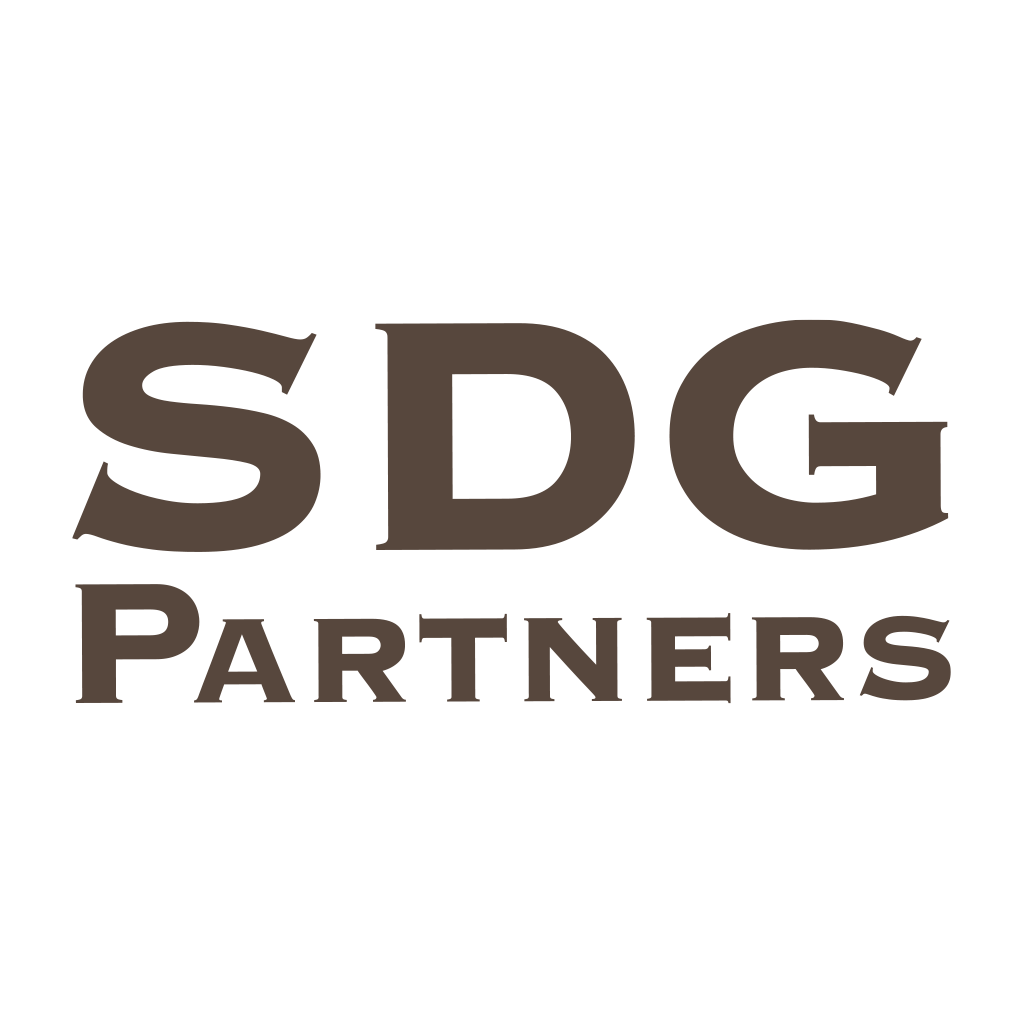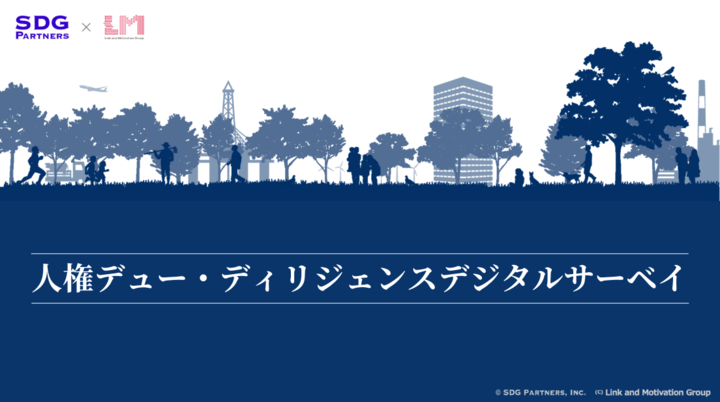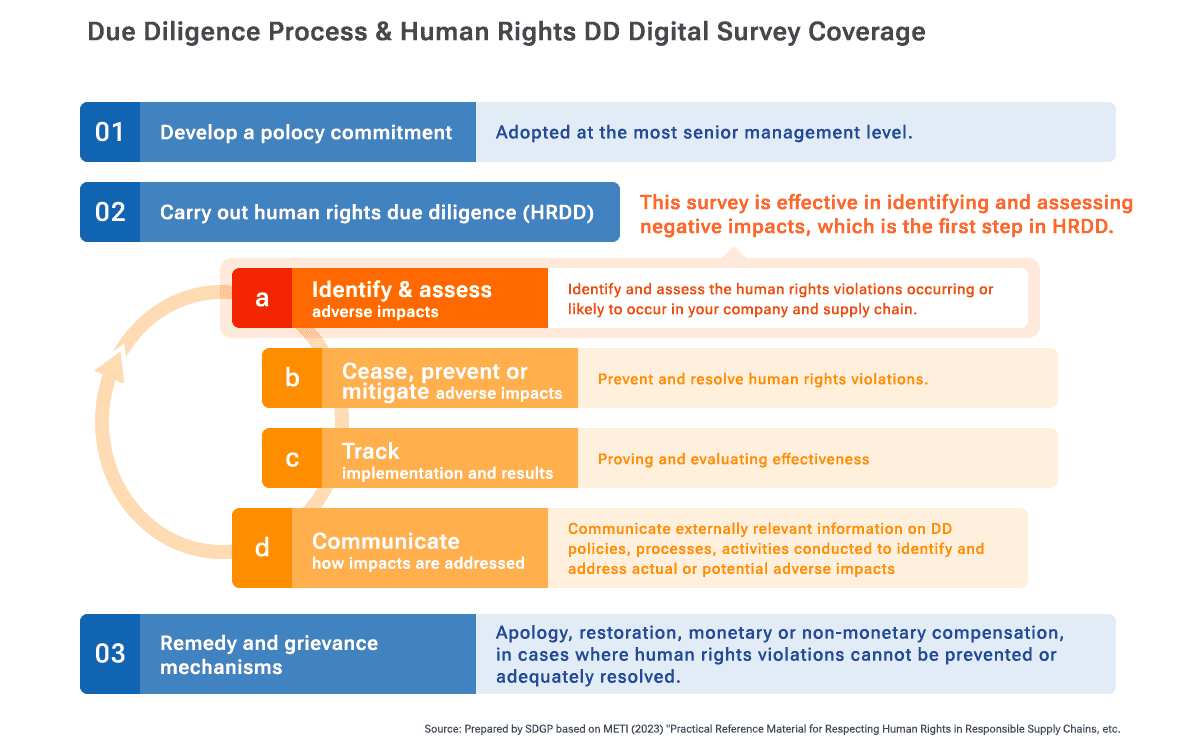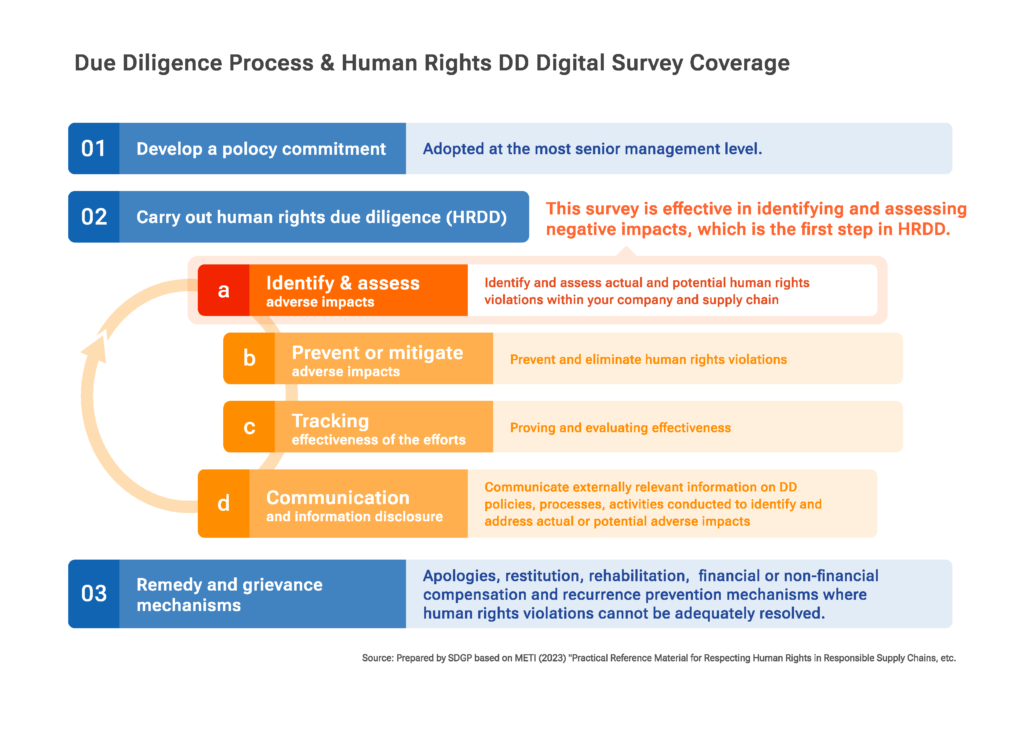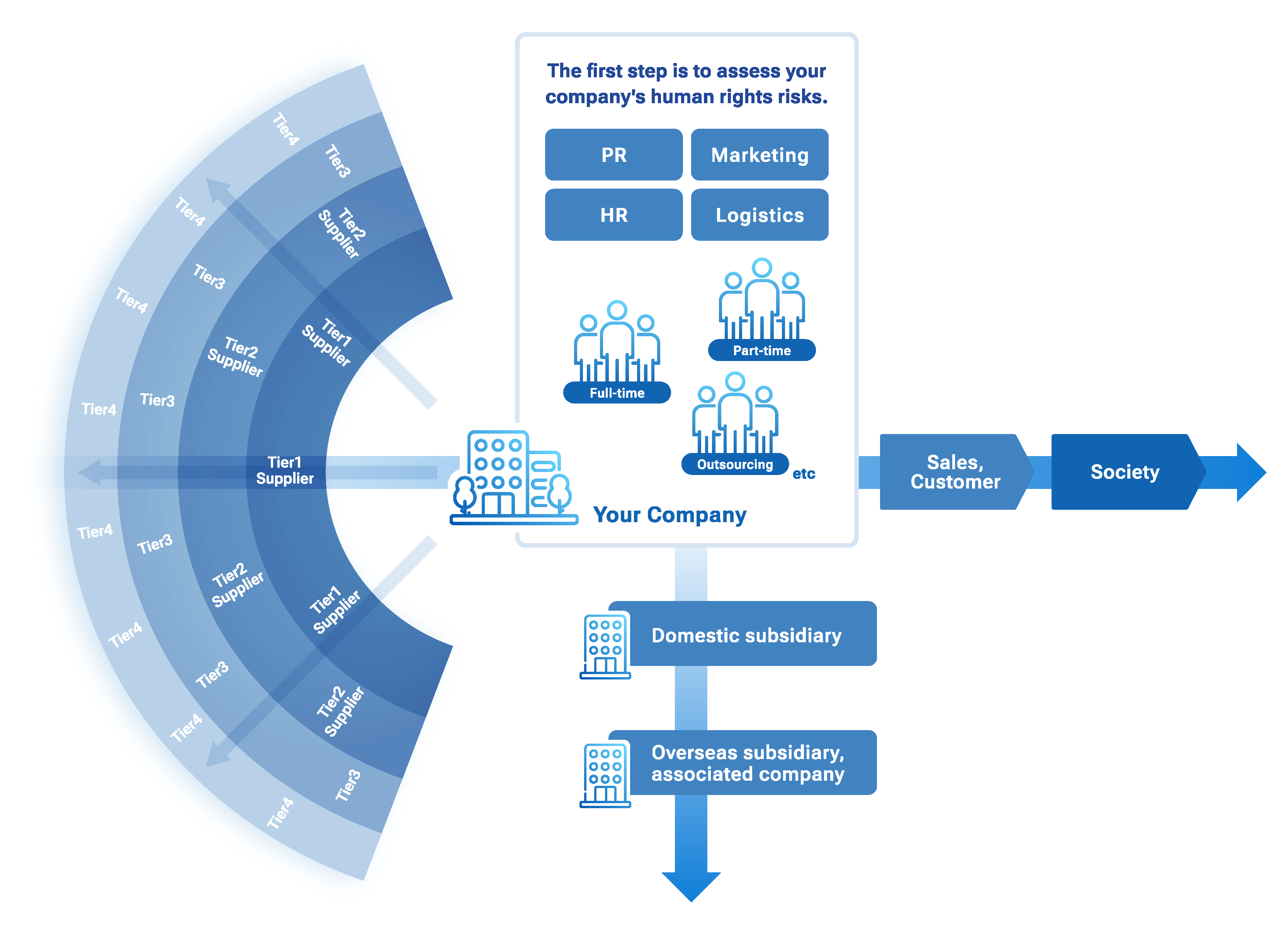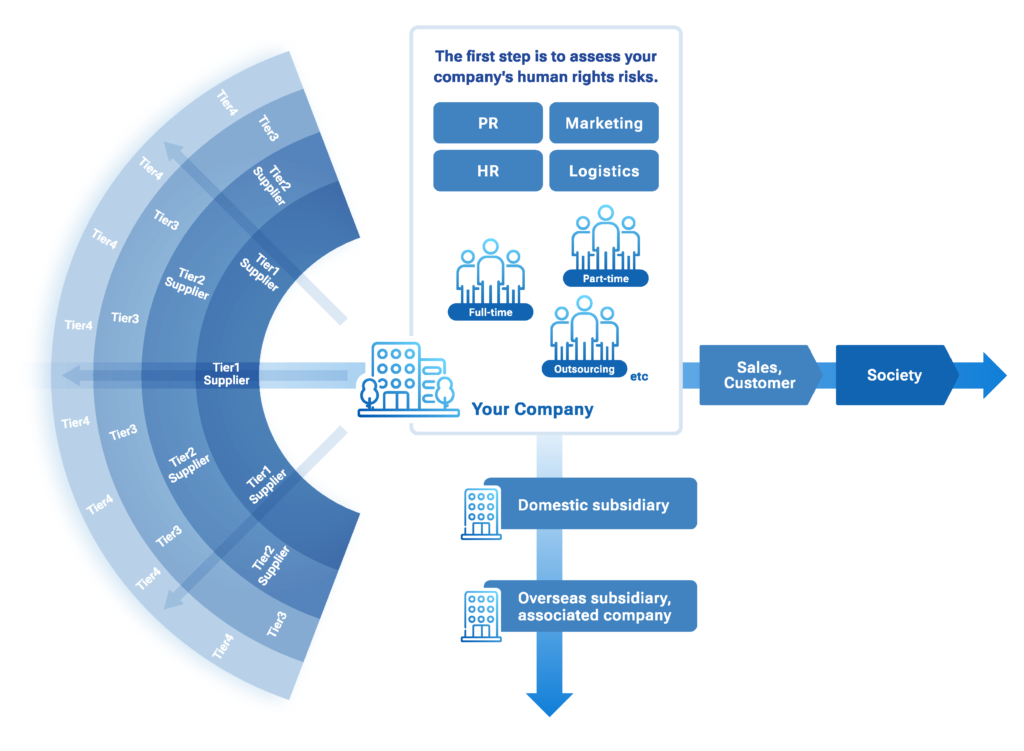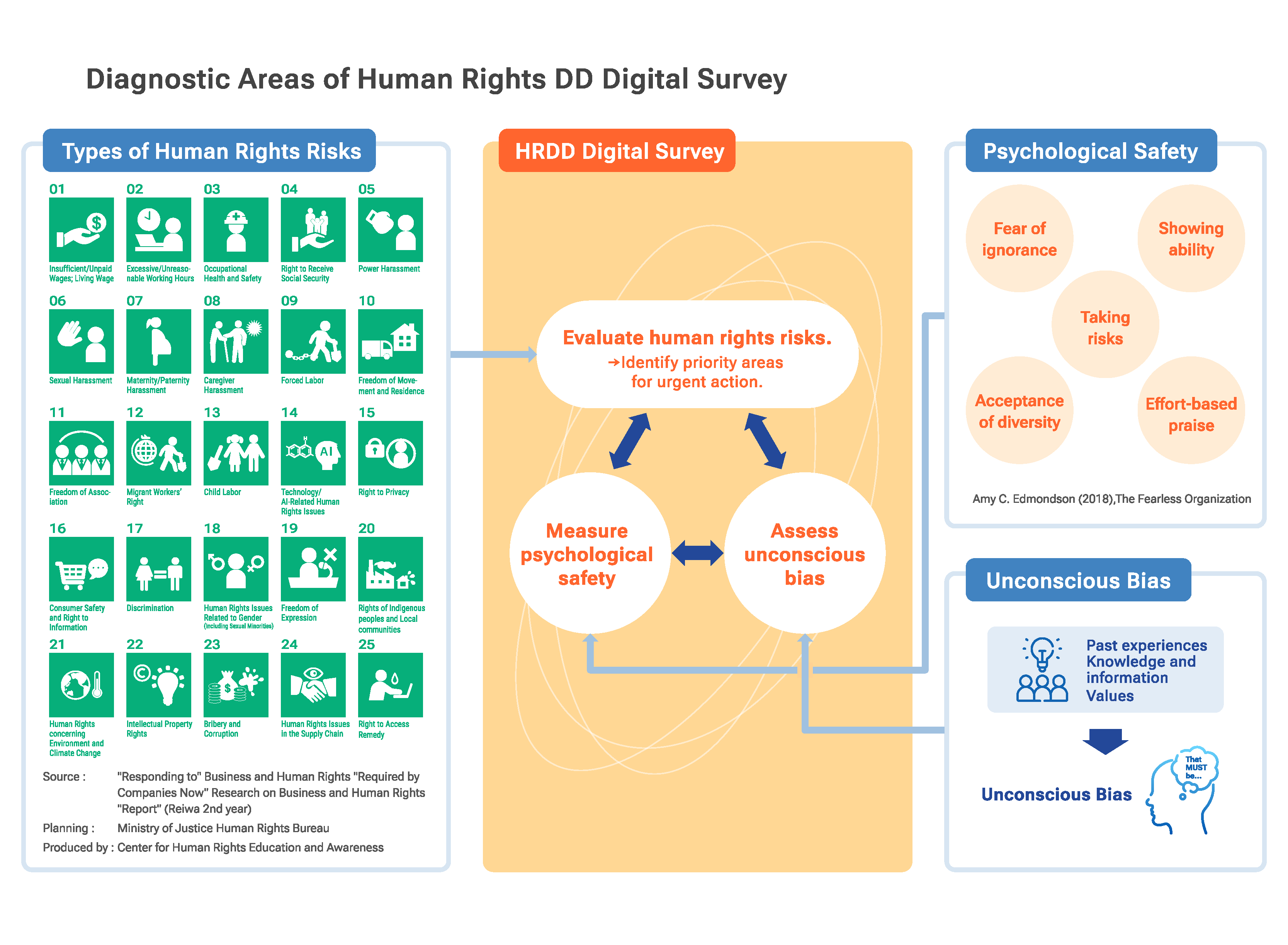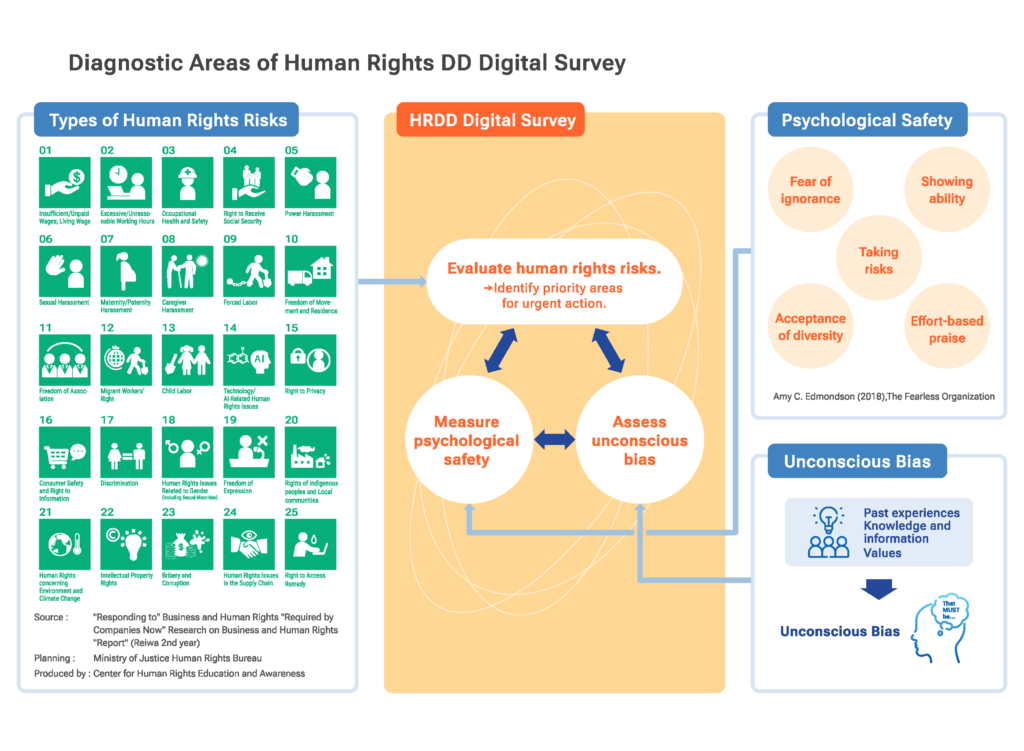Human Rights Due Diligence Digital Survey
-Accelerate Human Rights DD by Visualizing Corporate Human Rights Risks with the Shortest and Best Resources
SDG Partners ,Ltd (Head Office: Chiyoda-ku, Tokyo; President: Kazuo Tase),Link and Motivation Motivation Engineering Institute, Inc.(Head Office: Chuo-ku, Tokyo; Director: Takashi Oshima) and Link Corporate Communications, Inc. (Head Office: Chuo-ku, Tokyo; Representative Director: Daiji Shirafuji) will launch a human rights due diligence digital survey for companies to quantitatively measure their human rights risks. The survey will be available on November 24, 2023.
1.Major trends of “business and human rights” today
Today, the word “human rights” has been heard more than ever. Previously, human rights in business has mainly been issues such as discrimination against people with disabilities and/or ethnic minorities, and consumer rights in product liability. Recently, it has come to include a wider range of issues, including forced labor and child exploitation in your supply chain, and the reinforcement of human biases by artificial intelligence (AI). This trend stems from the Guiding Principles on Business and Human Rights adopted by the United Nations Human Rights Council in 2011. These principles have introduced a new idea that companies should be responsible for the respecting human rights throughout their entire supply chain, where it was limited within their own business operations before. This idea was then incorporated into domestic laws one after another by countries, mainly in Europe and the United States. The UK’s Modern Slavery Act, enacted in 2015, is the earliest example.
Since then, “Business and Human Rights” has gained more importance in ESG investment, and even in Japan, at least listed companies have adopted “human rights policy(human rights statement)” that covers the entire supply chain, and business enterprises are required to evaluate and mitigate potential or actual human rights risks inherent in their own business activities through a process called “human rights due diligence” as discussed later. In other words, it has become an international standard to establish a business that “values people,” including indirect and invisible aspects.
2.“Human rights due diligence” required for business enterprises
However, this Human Rights Due Diligence (hereinafter referred to as “Human Rights DD”) is a challenging task for business enterprises with no previous experience, as they have no idea what to do, where to start, and how to do it. More specifically, we need to search about whether people’s rights are being disregarded (1) close to your business enterprises’s operation, such as at the head office, subsidiaries, or group companies, (2) at the upstream of the supply chain, such as suppliers that provide raw materials, or suppliers on the next tier, (3) at the downstream such as customers or society at large, (4) or in relation to other various business partners. Nevertheless, this is not an easy task to undertake.
Last year (September 2022), the Japanese Ministry of Economy, Trade and Industry released a document called “Guidelines on Respecting Human Rights in Responsible Supply Chains.” This document explains precisely how to proceed with Human Rights DD, but it is difficult to understand the content unless you are familiar with the topic. In addition, because this document includes the word “supply chain,” many business enterprises will simply understand it as merely tracing back and visiting the producing sites of the raw materials. While that is certainly important, it makes us overlook the most important question: “Why do human rights risks occur in the supply chain?”
In fact, as the Ministry clearly stated, the very first thing to start with, and the one that has the greatest impact on human rights risks throughout the supply chain, is the human rights situation within your business enterprises, subsidiaries, and group companies. For example, let’s say your company has a military-like corporate culture, long working hours are the norm, power harassment is commonplace and everyone is paralyzed, and women and people with disabilities are pushed to the margins. Although it is easily understandable that this alone is already a very vital risk for the future of your company, this will also lead to severe negative impacts and risks, to your business partners and their subsequent partners. In other words, it is the contagion of a culture that does not value people.
For example, suppose your business enterprise has become accustomed to placing unreasonable orders with business partners on Friday evenings and forcing them to deliver by the following Monday. Because they will lose their businesses by rejecting such request, they gather all their employees and desperately try to meet the deadline. As a result, there is a possibility that many families will end up with mothers and fathers who do not come home on weekends. Human rights risks are easily “contagious.” In this regard, there is no doubt that the first line of the human rights DD is “figuring out your business enterprise’s own human rights risks.”
3.Challenges in assessing “human rights risks” within their business enterprises
However, estimating your business enterprise’s own human rights risks is also not easy. Methods that have been used so far include distributing questionnaires to employees which asks them to answer questions such as “Do you experience power harassment?” or “Have you received unreasonable transfer orders?” or conducting interviews towards randomly selected employees to find out their answers to questions such as “Are there any trends in which it is difficult to complain to your boss?” or “Are you willing to use the hotline?” In fact, major consulting firms, still use these methods today. However, although these surveys can somewhat infer their issues, atmosphere, and culture within their own business enterprises, it is impossible to quantitatively measure exactly how serious and actual they are. Many questionnaires are very rough and insufficient to assess human rights risks, and even interviews may not reveal the truth. The perpetrator will not confirm what happened, and victims also fear to speak out due to the possibility of retaliation.
Furthermore, it is difficult to get to the root causes and structure of why this happened. Even if it is determined through interviews that there is a greater risk of power harassment in one department than the other, it is extremely hard for the Human Rights DD methods of today to unravel the “causal relationship”. For instance, whether the cause was a specific department manager or section chief, or a corporate culture or system that makes certain individual with such human rights risks to promote, what are the kind of stresses that the employees are experiencing and how this connects to the next human rights risks. As a result, the “strategies” for companies to handle these risks have avoided the point by conducting training and disciplinary measures. This is the biggest challenge for the Human Rights DD at present which must be overcome. In order to solve these issues all at once, our company SDG Partners and Link and Motivation have developed the “Human Rights DD Digital Survey”.
4.What you can achieve by using “Human Rights DD Digital Survey”
(a) Extremely accurate assessment of human rights risks within the business enterprise/group
The Human Rights DD Digital Survey (hereinafter referred to as the “Survey”) requires some or all of your business enterprise’s employees to complete a survey that takes approximately 20-30 minutes. Answers can be made on a PC or smartphone, and all questions require a yes or no response, or a multiple-choice sensory evaluation on a 7-point scale, rather than written answers. In addition, although we collect basic information necessary for analysis such as job title and age group, we would not allow individual responses to be identified. It can be carried out for about 100 people to tens of thousands of people. The content is based on the 25 types of human rights risks identified by the Japanese Ministry of Justice’s Human Rights Bureau, and examines whether each human rights risk is recognized or understood as a risk by employees, and what has actually happened to you recently by answering Yes or No. This includes some gray areas that may or may not constitute human rights violations depending on the situation, but it is possible to get an idea of how the subjected employees consider human rights risks which is the biggest aim. We are also working on quantitatively measuring psychological safety and unconscious bias, which have become crucial in recent years, in order to estimate their relationship with human rights risks. From the wide range of “biases” and methodologies to measure them, this survey focuses on quantifying biases that most likely leads to human rights risks as accurately as possible, such as “hello effect”(taking opinions from people with authority for granted), and “stereotypes”(fixed mindset of such as gender-based roles).
As a result, various human rights risks can be classified and analyzed into four quadrants; (1) risks that many employees understand them as risks but frequently occur by not being able to change the way they do the business, (2) risks that frequently occur because many employees do not understand them as risks, (3) risks that are not understand but do not occur very often (potentially dangerous); (4) risks that are prevented from occurring because it is well understood. For example, in Japanese business enterprises, long working hours is typically classified as (1), and power harassment is typically classified as (2) based on a corporate culture where “it’s normal to do things without complaining.”
In addition to this information, analyzing data by age, job type, and department can reveal the current state of human rights risks with extremely high resolution. For example, in our preparatory testing, it turned out that the percentage of managers who think it’s natural to work long hours peaks in their early 40s, and the percentage of managers who actually work long hours peaks in their 20s. From their own working experience, it becomes clear that new employees in their 20s are being forced to work long overtime hours. This survey is designed to provide such a high-resolution understanding of the current situation regarding almost all human rights risks. In addition to the above, as data is accumulated through this survey, it is also possible to analyze companies from a meta perspective, such as “How does our company compare to the national average?” and “How does our company compare to the average in the same industry?” In other words, the more data that is accumulated, the more accurately human rights risks can be quantified.
(b) Root cause analysis of human rights risks and consideration of countermeasures – psychological safety and unconscious bias
However, the results of this survey are nothing more than an “X-ray photograph” in terms of a medical examination. For example, let’s say you have a CT scan taken for a medical checkup, and the doctor says, “This area is white, it’s a tumor.” It turns out that there is a big risk of life and death for you, but that alone does not tell you why it happened or how you can eliminate that risk. Exactly the same can be said about human rights risks. The survey results are just “X-ray photographs.”
Therefore, the two concepts that I introduced earlier, “psychological safety” and “unconscious bias,” are be useful in identifying the cause of illness. Although the causal relationship with human rights risks has not been academically clarified in any of these cases, it is thought that there is at least a significant correlation. Furthermore, in the field of human capital and personnel strategy, the impact of both on employee productivity is currently being academically studied.
For example, if the belief (prejudice) that “it’s normal to work until midnight to accomplish what your superiors tell you without complaining” is rampant throughout the organization, this can easily lead to power harassment and long working hours. Furthermore, in workplaces where power harassment is rampant, it is highly likely that people will not be able to say what they want to say, which means that psychological safety will be low. However, for example, in the case of an organization with an extremely military-like constitution, there are exceptions such as “even though there is power harassment, psychological safety is not low.”
By quantitatively analyzing human rights risks and the state of mind of employees, experts at SDG Partners and Link and Motivation will work with your team to investigate the causes and mechanisms of human rights risks. Sometimes the cause is institutional (in many cases, the personnel evaluation framework), sometimes the corporate culture has become entrenched over a long period of time, and sometimes it is the responsibility of the top management, but once the cause is known, we can consider ways to deal with it.
In many cases, responses include institutional reform, human rights training and awareness, and even punishment, but in any case, the important point is that changing human mindsets requires a certain amount of time. Unfortunately, there is no such thing as completely eliminating all human rights risks within a year or so. Additionally, in some cases, it may be possible to combine this with an engagement method such as the Motivation Cloud provided by Link and Motivation.
(c) Required human rights DD disclosure
Whether it is business and human rights or human capital, companies, whether listed or not, have information on what policies they have, what their current situation is, and where they are aiming. It is now required that information be widely disclosed. Moreover, the standards have been rising every year, and until recently it was enough to have a human rights policy, but recently it has become necessary to disclose the results of the Human Rights DD, the analysis thereof, and the measures to be taken from here. This is becoming an international standard. Unfortunately, there are only a few Japanese companies that can properly meet these demands.
This survey is a tool that can meet these high demands head-on. The extent to which survey results should be quantitatively disclosed is up to each company. For example, with solid quantitative analysis, you can generally say: long working hours and power harassment were particularly noticeable in the sales and manufacturing departments, so various measures are being taken in response. Quantitative data can be a great asset in your relationships with stakeholders, especially investors.
5.Positioning of this tool in the international trend of human rights DD and patent application
Many companies are currently at the stage of trial and error as to how to design and implement Human Rights DD, and although there are guidelines issued by various organizations and governments, there is no formula that says it has to be this way. Among these, this service, Digital Human Rights DD Survey, is probably the first in the world to integrate three concepts that are attracting academic attention: human rights risks; psychological safety; and unconscious bias. It is an advanced Human Rights DD method, as it seeks to understand both quantitatively and quantitatively.
SDG Partners and Link and Motivation jointly filed a patent application with the Japanese Patent Office on October 25, 2023 regarding the technology used in this service. Furthermore, this technology is not only applicable to Japanese companies, but can be used by companies, organizations, and groups around the world. For this reason, we are already developing an English version of this survey in parallel, and we are able to respond to companies outside of Japan, as well as companies where Japanese and English are mixed in the group.
6.Possible support details/contact information, etc.
Using this survey as a starting point, you can use it for your company’s Human Rights DD mainly in the following three patterns.
A. Survey implementation only (including a debriefing session)
We will conduct everything from preliminary survey design to implementation and post-implementation results reporting.
B. Conducting surveys + detailed hearings and analysis suggestions
After conducting the survey, we will conduct more detailed interviews based on the results to address Human Rights DD, and analyze and suggest your company’s human rights risks and possible countermeasures.
C. Implementation of survey + detailed hearing/analysis and suggestion + identification of potential movers/formulation of implementation plan Based on the survey and analysis results, we will identify the specific measures your company needs and draw up an implementation plan.
In addition to the above, we can also respond flexibly depending on your company’s situation.
Please contact info@sdgpartners.jp (Subject: “Inquiry: HRDD Digital Survey (company name)”).
